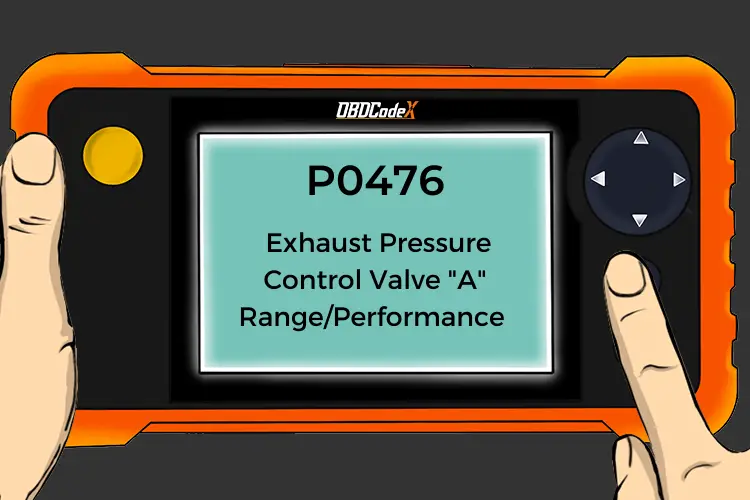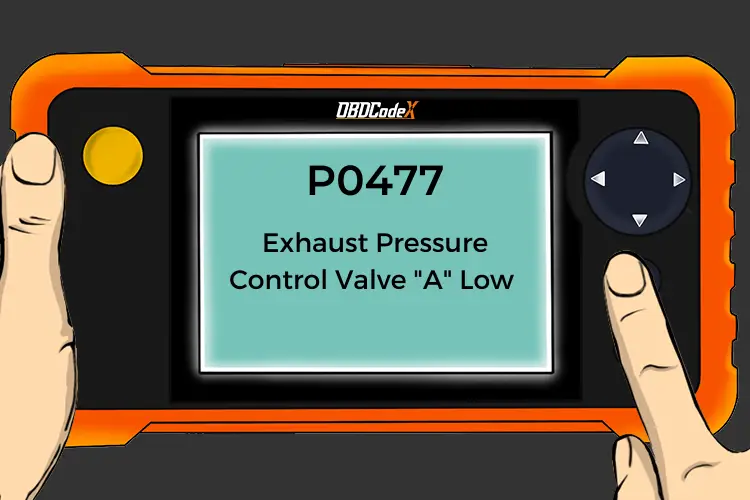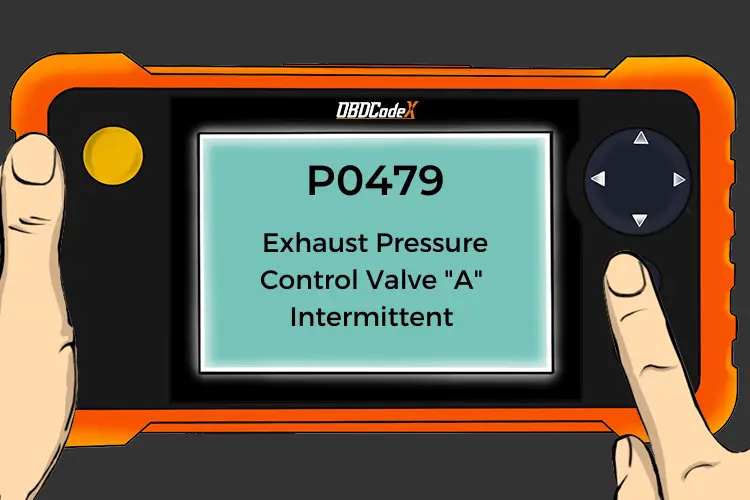P0475: Exhaust Pressure Control Valve "A"
Is your scanner showing P0475?
No worries. We'll show you what it means and how to deal with it.
P0475: Exhaust Pressure Control Valve "A"
OVERVIEWWhat Does The P0475 Code Mean?
A valve is placed in the exhaust stream after the exhaust manifold to generate heat in the form of back pressure in the exhaust. This heat and/or back pressure can be used to assist in cold start warm up.
It can also be used to oppose cylinder pressure coming from the engine cylinders out of the exhaust, thereby slowing the engine down and the vehicle along with it. This is especially useful during towing operations.
This code is strictly concerned about the output circuit to the exhaust pressure control solenoid. This is code is considered to be an electrical circuit fault only.
Troubleshooting steps may vary depending upon manufacturer, type of exhaust back pressure control, and wire colors to the control solenoid.
What Are The Symptoms Of The P0475 Code?
Symptoms of a P0475 engine code may include:
- Malfunction Indicator Lamp (MIL) illuminated
- Lack of power
- Lack of engine braking
- Longer than normal cold engine warmup time
What Are The Potential Causes Of The P0475 Code?
Typically the causes for this code to set are:
- Short to Power in the power supply circuit between the exhaust pressure control solenoid and the PCM (powertrain control module)
- Open in the power supply circuit between the exhaust pressure control solenoid and the PCM
- Short to ground in the power supply circuit to the exhaust pressure control solenoid
- Exhaust Pressure Control Solenoid faulty
- Possibly the PCM has failed (highly unlikely)
How Can You Fix The P0475 Code?
A good starting point is always a technical service bulletin (TSB) search for your particular vehicle. The vehicle manufacturer may have a PCM flash/reprogram to cover this issue, and it pays to check on this before you find you’ve gone down a long/wrong path.
Next, locate Exhaust Pressure Control Solenoid on your particular vehicle. Once located, visually inspect the connectors and wiring. Look for chafing, rubbing, bare wires, burn spots or melted plastic. Pull the connectors apart and carefully inspect the terminals (the metal parts) inside the connectors.
See if they look corroded, burnt or possibly green in color versus the normal metal color you are probably used to seeing. You can get some Electrical Contact cleaner at any parts store if cleaning of the terminals is needed. If this is not possible, find some 91% rubbing alcohol and a light plastic bristle brush to clean them with.
Afterwards let them air dry, get some dielectric silicone compound (same stuff they use for light bulb sockets and spark plug wires) and put some where the terminals come into contact.
If you have a scan tool, clear the diagnostic trouble codes from memory, and see if this code returns. If it does not, then the connections were most likely your problem.
If the code does return, we will need to test the solenoid and its associated circuits. Typically there are 2 wires at the Exhaust Pressure Control Solenoid. First, disconnect the harness going to the Exhaust Pressure Control Solenoid.
With a Digital Volt Ohm Meter (DVOM), connect one lead of the meter to one terminal of the solenoid. Connect the remaining meter lead to the other solenoid terminal. It should not be open or shorted. Verify the resistance specifications for your particular vehicle. If the solenoid is either open or shorted (infinite resistance or no resistance/0 ohms), replace the solenoid.
If that’s OK, with a DVOM, check to make sure you have 12V on the Exhaust Pressure Control Solenoid power supply circuit (Red lead to the solenoid power supply circuit, black lead to a good ground). Insure ignition is on. If there is no 12 volts to the solenoid, or if there is 12 volts when the ignition is turned off, repair the wiring from the PCM or relay to the solenoid, or possibly a bad PCM.
If that’s OK, check to make sure you have a good ground at the Exhaust Pressure Control Solenoid. Connect a test light to 12V battery positive (red terminal) and touch the other end of the test light to the ground circuit going to the Exhaust Pressure Control Solenoid circuit ground. If the test light does not light up, this would indicate the problem circuit. If it does light up, wiggle the wiring harness going to each sensor to see if the test light flickers, indicating an intermittent connection.
If all tests have passed so far, and you continue to get a P0475 code, this would most likely indicate a failed Exhaust Pressure Control Solenoid, although a failed PCM could not be ruled out until the solenoid had been replaced.
Recommended Parts
Below are some recommended auto parts to help you address the trouble code affecting your vehicle and get it running smoothly again:
>>> WORKPRO 582-piece Crimp Terminals, Wire Connectors, Heat Shrink Tube, Electrical Repair Kit
>>> ECU
>>> INNOVA 5210
>>> KAIWEETS Digital Multimeter
Note: During the purchasing process, please check carefully whether the part you want to buy fits your car!
Reference Sources
P0475 Exhaust Pressure Control Valve “A”, OBD-Codes.




